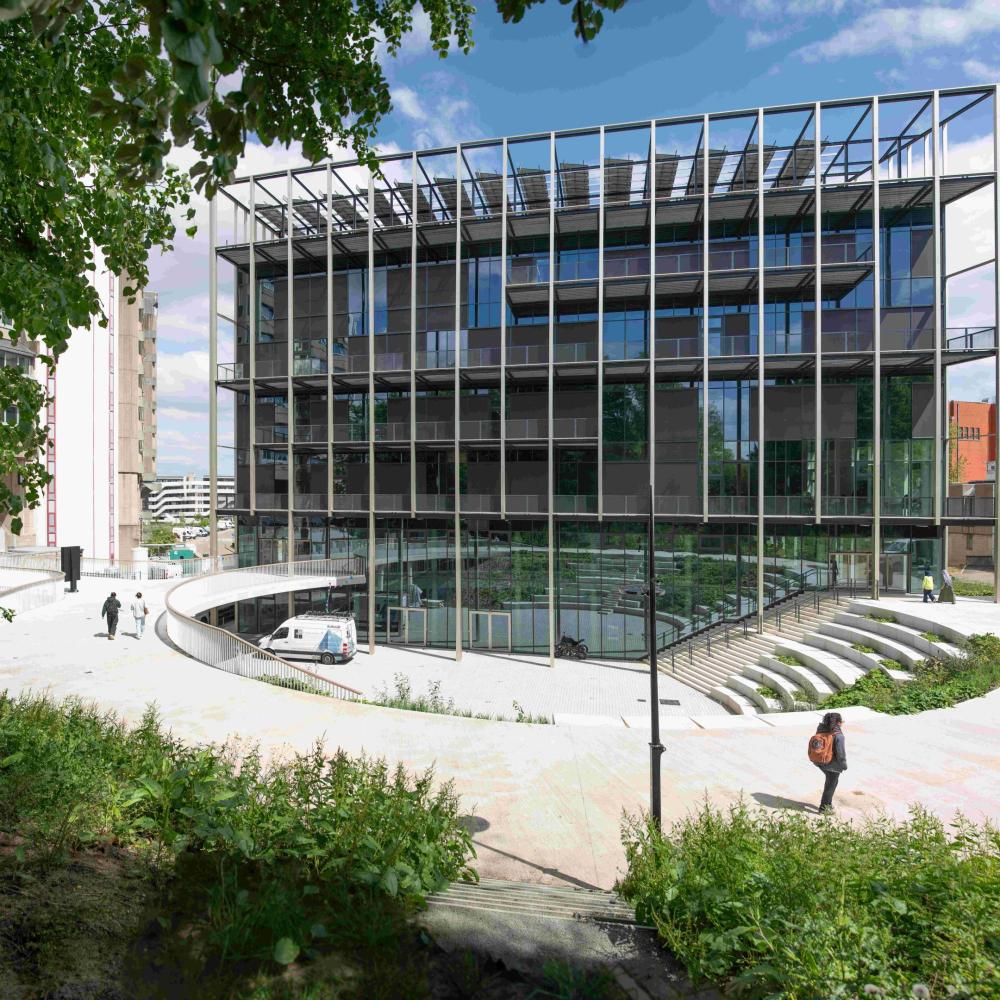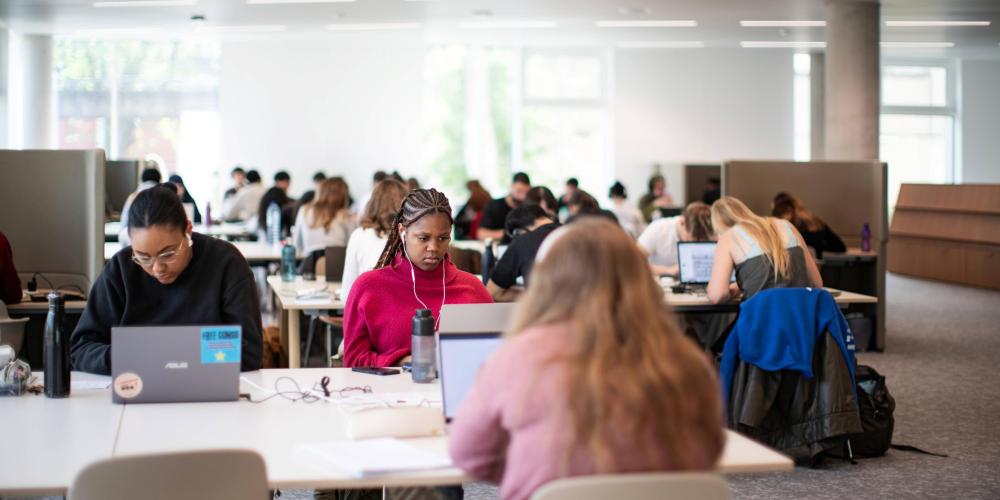
On 14 May, the brand-new Learning and Innovation Center (LIC) officially opened its doors, right on the border of the VUB and ULB campuses. This state-of-the-art building is much more than just a place to study. With low-stimulus zones, high-tech collaboration spaces and even a Zen Zone, it’s a vibrant hub for focus, teamwork and relaxation. Curious what that looks like in practice? A passionate professor, an LIC staff member and a student worker share their experiences.
Professor Jo Tondeur, educational technologist and subject didactics expert in Behavioural Sciences (MILO, VUB)
“There’s clearly been a lot of thought put into how the physical and digital spaces can complement and reinforce each other”
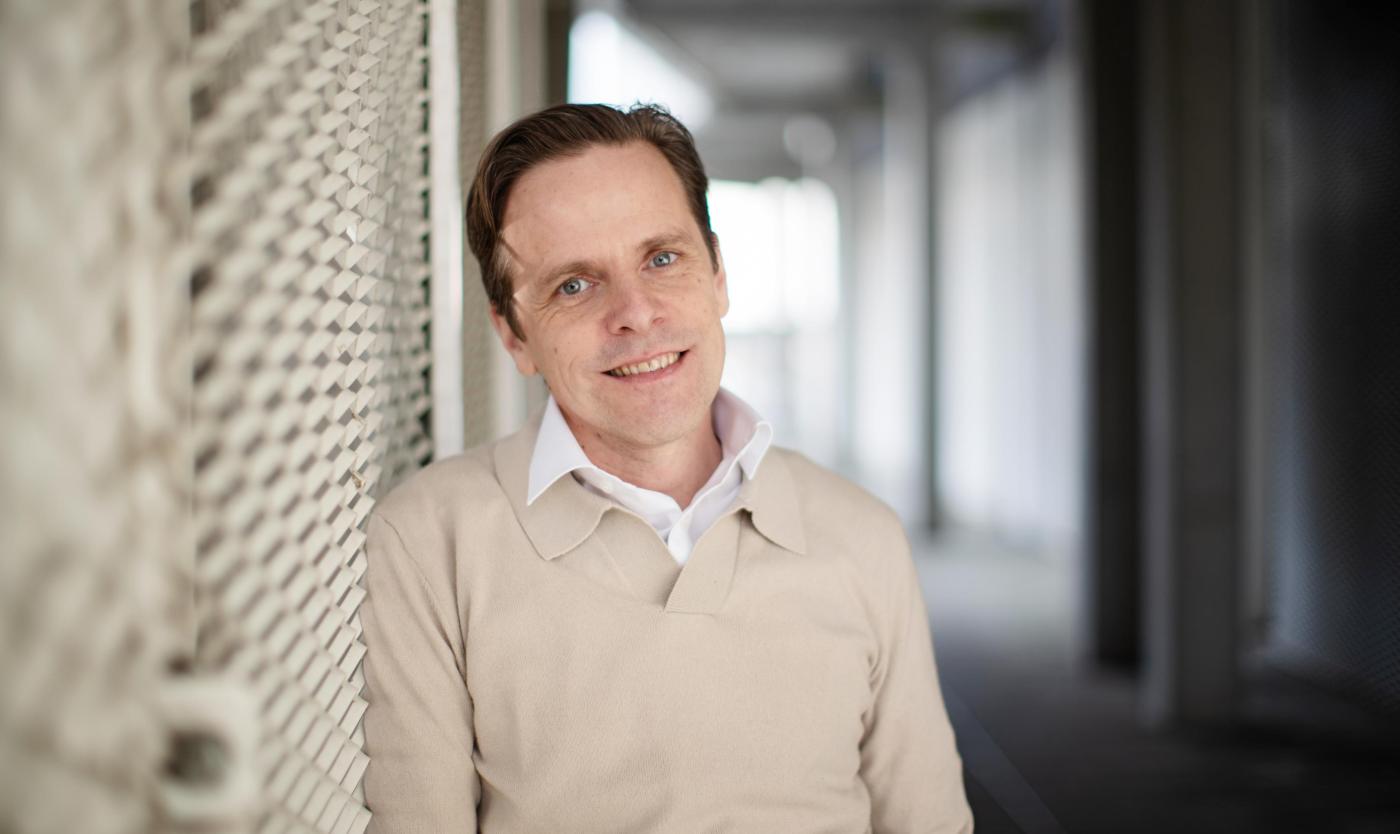
Why was the LIC necessary?
Jo Tondeur: "The infrastructure on campus was in urgent need of renewal. Even recent buildings, such as Building I, still follow the classic 'Grammar of Schooling': the teacher at the front, students in rows. This fits with an industrial model of education, while we need to evolve towards spaces that encourage exploration. The LIC does that. Materiality — the space in which you learn — affects how you feel and act."
Why is space so important in the learning process?
"The LIC is designed based on the principle of The Third Teacher: parents are your first teachers, teachers your second, and the space the third. This space determines what we do and how we learn. What I find striking is the thoughtful integration of physical and digital environments. Post-COVID, we are better equipped to work with digital tools, but the combination with physical spaces had lagged behind. The LIC changes that."
"One of the things I believe is necessary is a building that invites people in. And the LIC does that. With this building, materiality has become an important actor for the university. The space you’re in has an impact on our well-being, but also on how we act within that space. The new LIC building will invite us to explore, which is crucial for both our students and lecturers."
"The building is designed for hybrid collaboration: students, lecturers, and external partners can easily communicate with each other, even remotely. Every room offers technological support for this. In almost every space, there is the possibility to communicate with others via a screen. The spaces thus encourage networking, but also lifelong learning or hosting conferences."
How do you see the collaboration with ULB?
"Strangely enough, from the VUB campus, you can’t see the ULB campus, even though it’s right next door. We were literally hiding from each other. There’s been a growing closeness in terms of collaboration, and now there is literally and figuratively a bridge between the two universities. I think it’s going to become a vibrant meeting place."
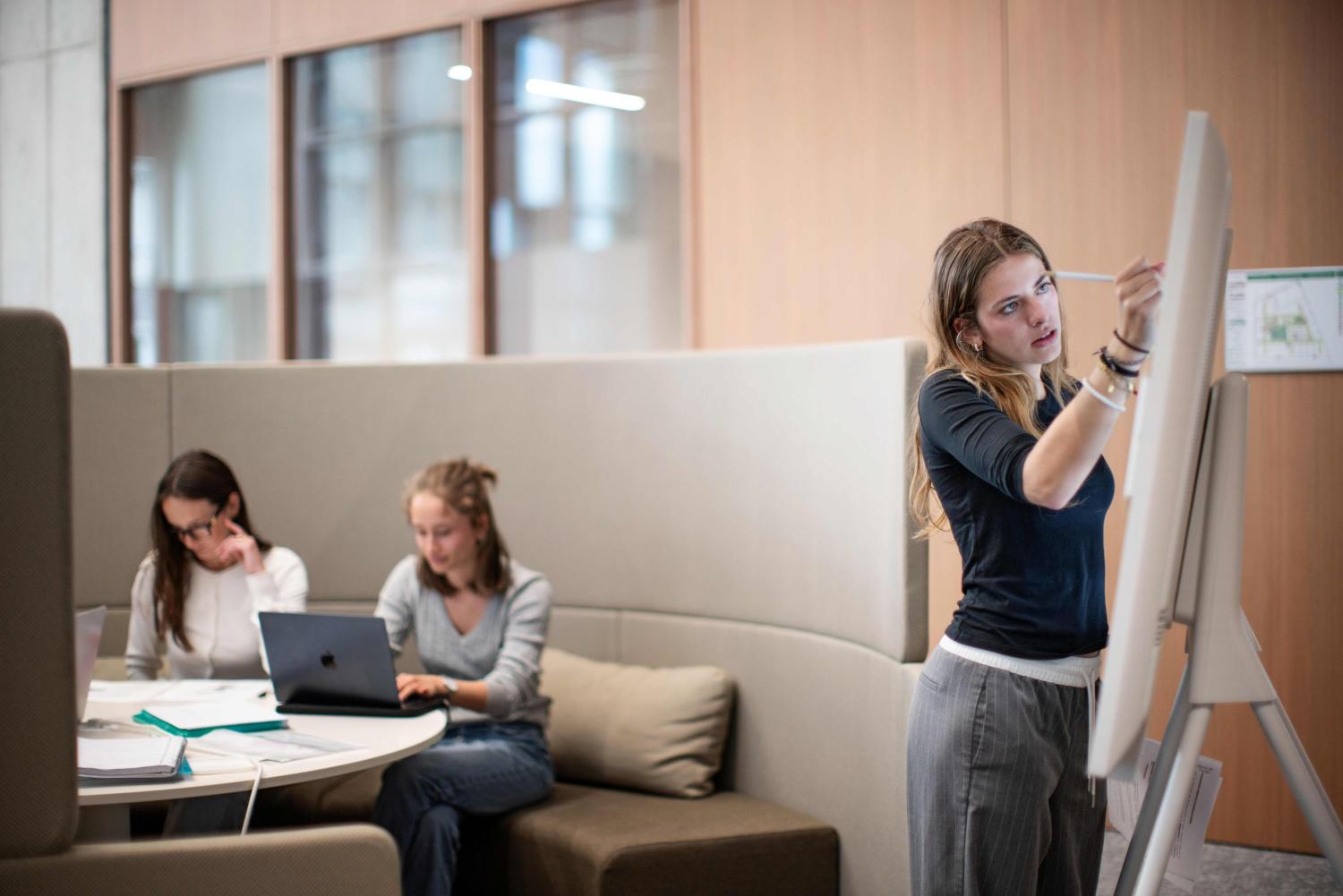
In the LIC, physical and digital spaces seamlessly blend together.

Kyra Hidding, educational expert, coordinates technological support for lecturers and contributes to the daily operation of the LIC building
“We believe the LIC will become a vibrant, dynamic meeting place”
Why will the LIC become the new place to be for students?
Kyra Hidding: "The 9,000 m² building is spread across eight floors, six of which are dedicated to students. There are hundreds of study spaces where students can sit individually, and more than 40 meeting and collaboration areas for group work. The meeting rooms are equipped with digital facilities such as screens, making it easy to collaborate with students remotely via tools like Teams."
What makes the building so special?
"It’s not just an ordinary study space. There are collaborative teaching spaces for active group work, low-stimulus zones for those seeking peace, and a Zen Zone with bean bags and poufs to truly unwind. On the ground floor, there’s the Learning Café, where you can grab a bite to eat or drink. Everything is designed with the idea of creating an open, informal, and vibrant learning environment."
How innovative is the LIC?
"We’ve been inspired by educational buildings around the world. This led to the creation of the Immersive Room, where 360° projections can be shown on all walls. This allows us to create lab simulations or social settings, for example. Additionally, there are two rooms equipped with technology for easily joining online doctoral defenses or meetings with international partner institutions and networks, such as within Eutopia."
Why should students book a spot?
"The current number of study spaces and group work facilities on campus is insufficient, and with the LIC, we aim to provide a structural solution. If you want to make sure you get your favorite spot, it’s best to reserve it in advance via lic.brussels. Just as important is that students feel at home here and engage in campus life, so they can develop optimally and gain the skills that will prepare them for their professional future."
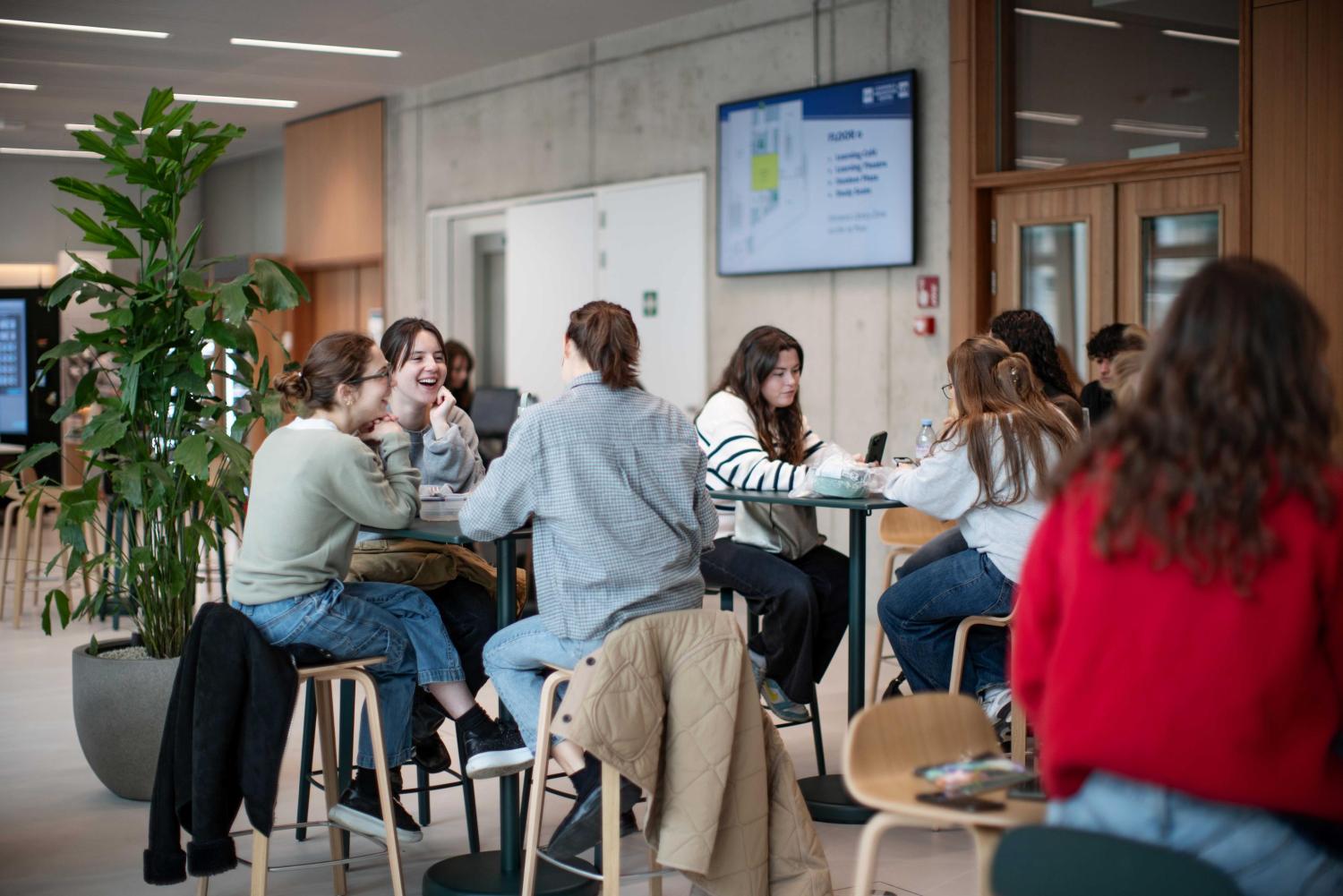
Students in the Learning Café of the LIC
Leon Bauweraerts, Physics and Astronomy student, started working as a student assistant in the LIC on February 10
“The late opening hours are a big advantage”
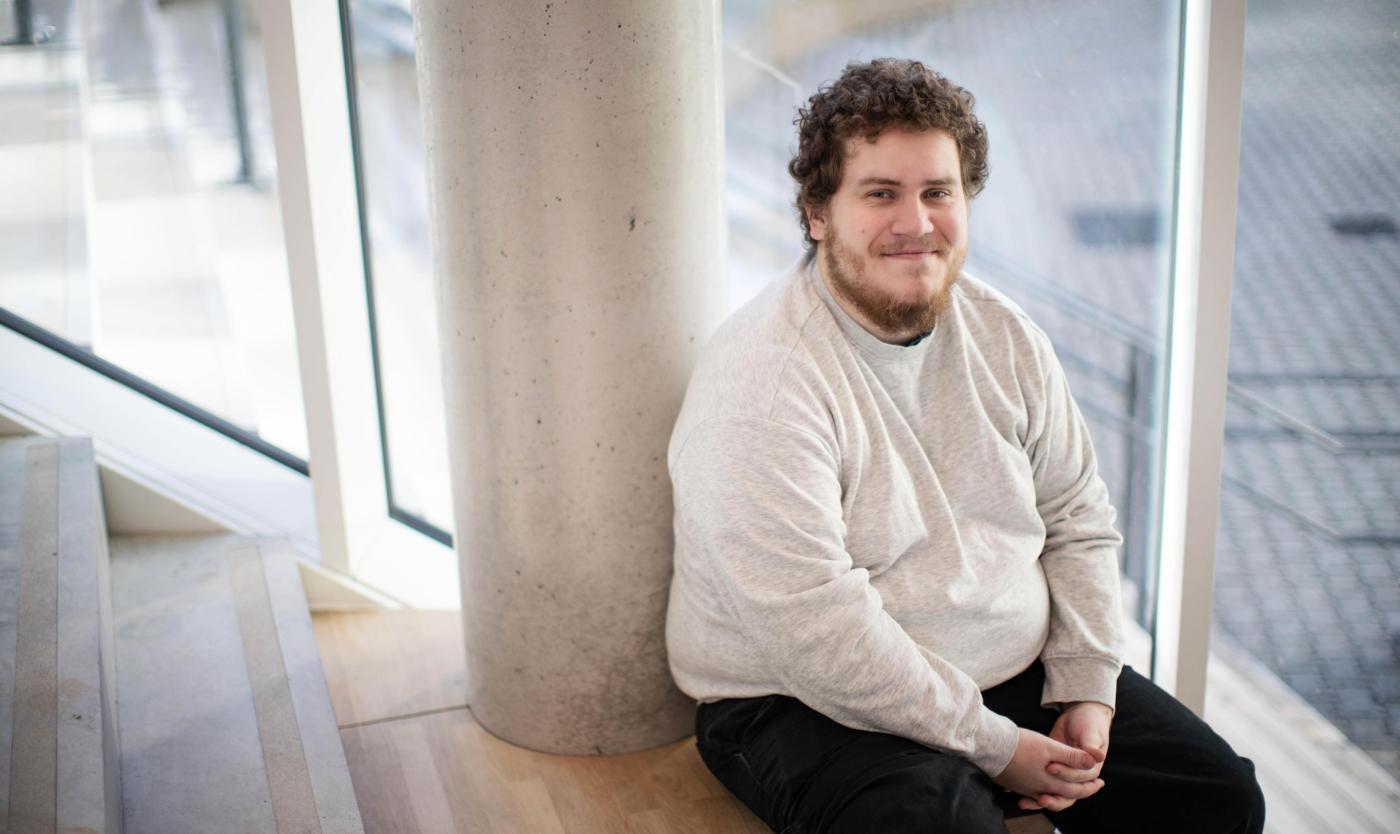
What will you be doing in the LIC?
Leon Bauweraerts: "I’ll mainly be doing front desk work: helping people find their way around and providing information."
What do you think are the strengths of the LIC?
"The late opening hours, until 11 PM every day, are really useful for student workers because you can go work after your studies. I’ve been at VUB for some time, and I’ve noticed how few buildings are open in the evening. Students didn’t have a place to go other than their dorms. The cafés stay open, but they serve a specific purpose: you’re a customer expected to order drinks. Now, there’s a place we can always go, for example, to study outside the main exam period."
"There will also be a lot of space for research, which is a good thing because the more research a university can do, the better."
"Sharing the LIC with ULB seems like a good idea because it allows for more exchange. Personally, I’ve already had a lot of contact with ULB students. I enjoy going into the city, and you always run into each other. I’ve also been active in student organizations, which brings you into contact with ULB. Especially because we share similar values and uphold the principle of Free Research."
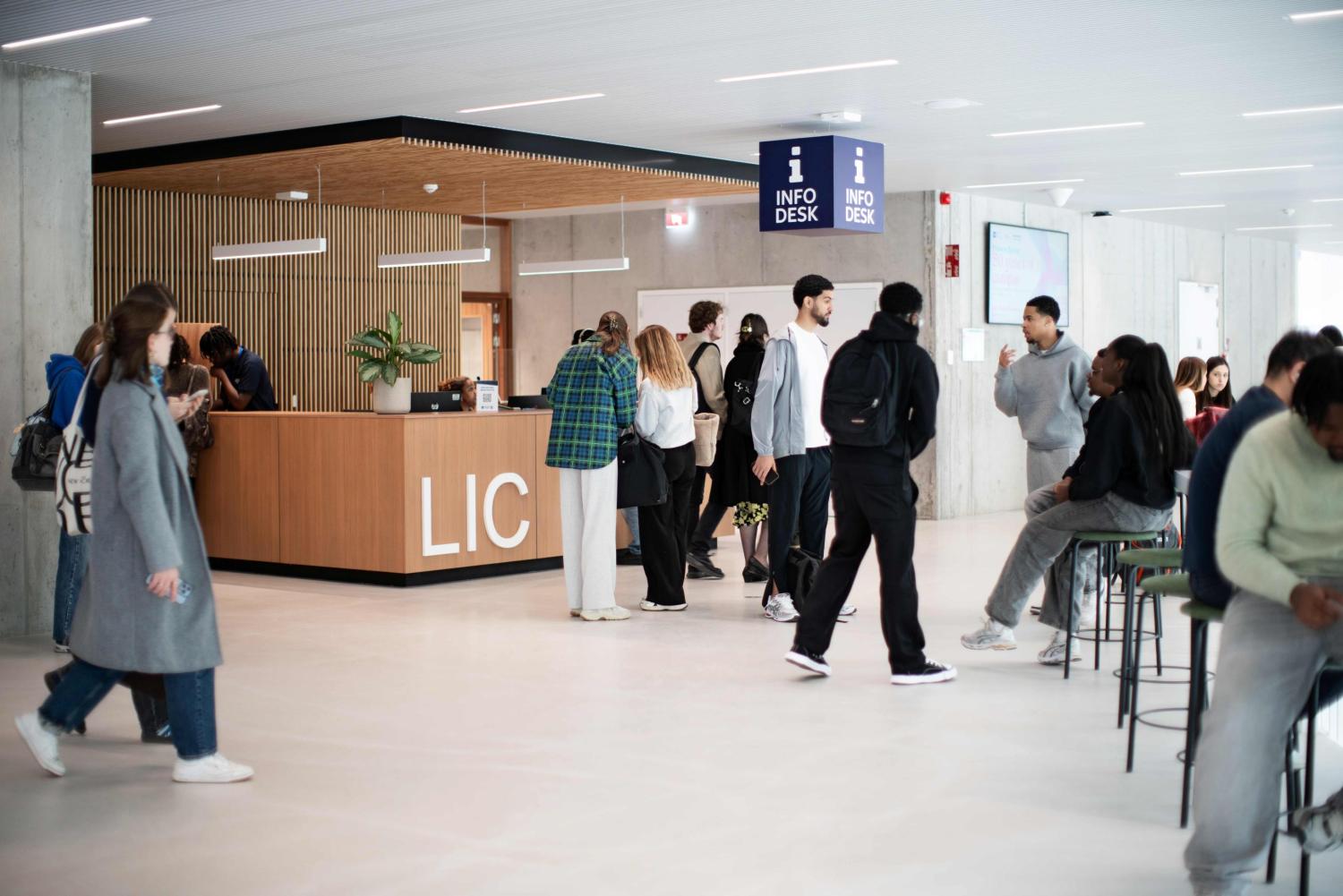
Students can go to the Infodesk with any questions about the LIC.
A glance across the campus boundary
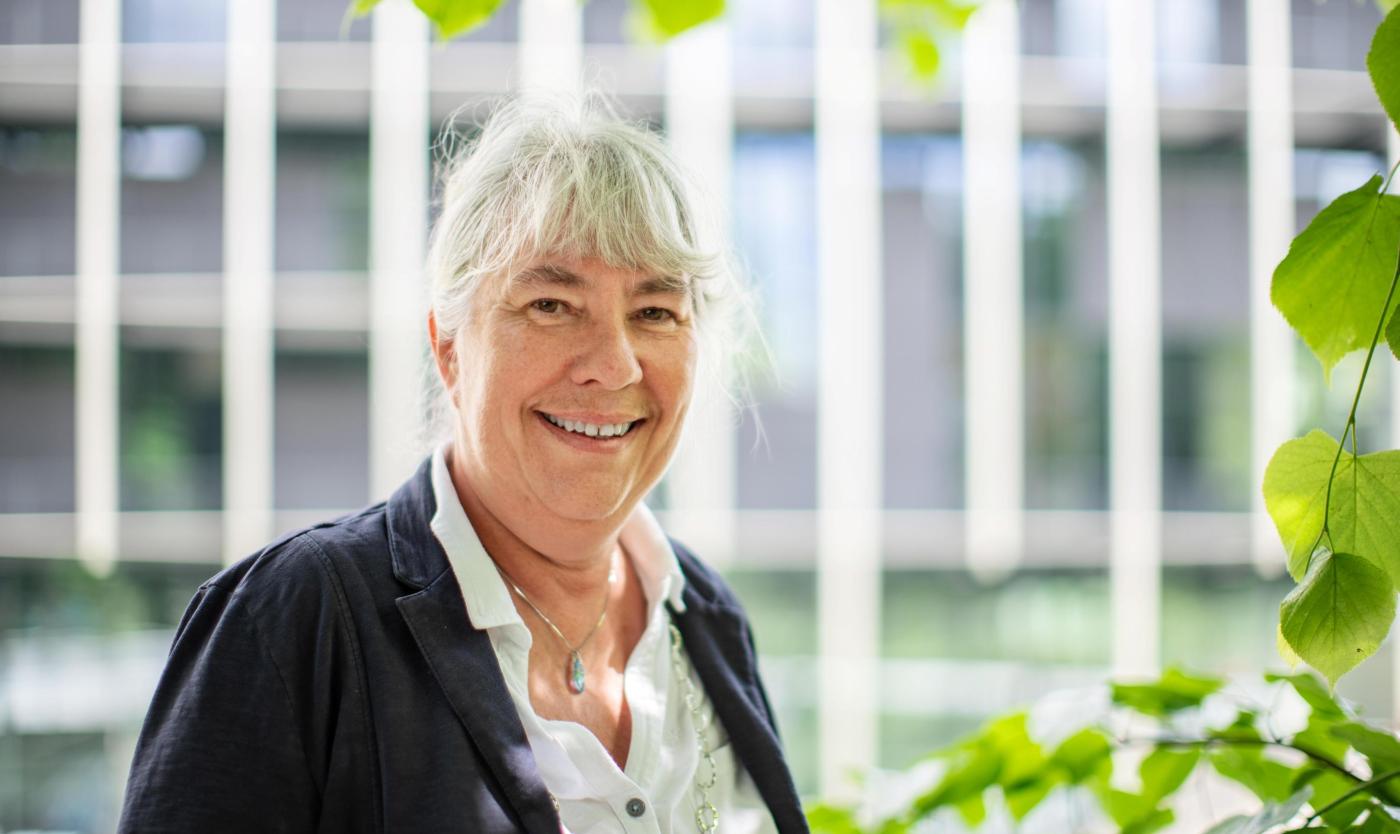
Cécile Moucheron, professor and former vice-dean of the Faculty of Sciences at ULB
“We didn’t want a traditional library. Everything has been designed with a focus on interaction and collaboration”
What was the ambition behind the LIC from the ULB perspective?
Cécile Moucheron: "The LIC is much more than a library. It’s a learning environment, equipped with the necessary infrastructure to support pedagogical innovation. A place where students learn together, work in groups, exchange ideas, and develop projects."
What makes the LIC so special as a learning environment?
"Everything has been designed with a focus on interaction and collaboration. No more traditional lectures, but flexible spaces for group work and co-creation. Students collaborate in meeting rooms with screens, and all workspaces are digitally connected to facilitate smooth collaboration."
"There are also specific spaces for hybrid teaching, so we can set up projects between the ULB campuses in Brussels and Charleroi, or within CIVIS, our European university alliance."
"The design also stimulates learning. For example, the immersive room projects on walls, floors, and ceilings, transforming the entire learning atmosphere. It’s a sensory experience that enriches lessons or enables innovative simulations — think of an astronomy class on Mars."
"Moreover, there are digital whiteboards, modular tables, and support spaces for scientific subjects, with individual workstations and central screens for the instructor. Everything has been designed with modularity and innovation in mind. And then there are the ‘cosy’ zones — comfortable nooks that are ideal for quiet study sessions."
Is support provided for those who want to use the technology?
"Certainly. We provide training, tutorials, and guidance so that both students and lecturers can easily learn to use the tools. Innovation only works when it’s accessible. Just like the spaces themselves, the technology needs to encourage use."
